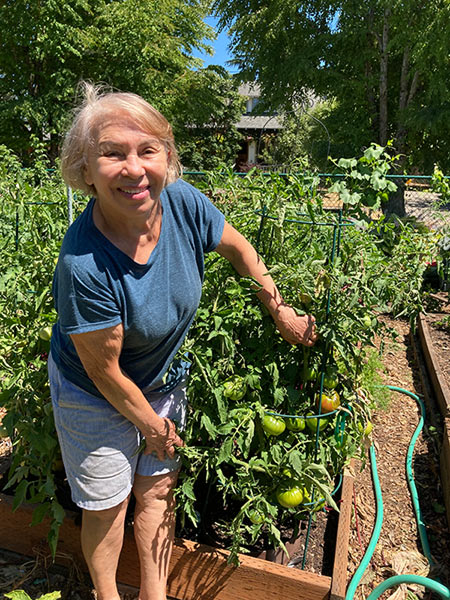By Kepper Petzig | Contributing Writer

Have Your Own Garden
Have you ever thought that tomatoes and strawberries from the store don’t have the flavor you crave? Do you love making flower arrangements for family and friends? If you dream about having fresh home-grown vegetables and fruits and you enjoy getting your hands in the dirt, all this can be yours with a garden.
What? Not enough sun? Not enough space? You’d rather have roses in your yard than potatoes? A Portland Park District Community Garden may be for you.
Community Gardens
Portland Parks & Recreation (PP&R) operates 60 community gardens located throughout Portland. The only community garden that falls within the Concordia Neighborhood is the Kennedy Community Garden. Located on 35th Street behind McMenamins Kennedy School, the Kennedy Community Garden has .36 acres and was acquired by the city in 1999. Maps of the Kennedy Community Garden and the other Portland community gardens can be found on the PP&R website.
People interested in joining a community garden must submit a plot request form and are added to a waitlist. Since most gardens have a one or two year waiting list, it is possible to be on two garden waitlists at a time. Garden plots are assigned as they become available.
Costs and Labor Involved
There are different sized garden plots and fees are based on the size. Fees and sizes vary from $5 a year for a single ADA-accessible raised bed to $220 a year for an 800 square foot plot. 100 square foot plots are popular and cost $9 to $36 a year. There are scholarships available based on income.
In addition to the plot itself, tools and gardening materials must be purchased but gardening can be done fairly inexpensively. Many gardens provide donated compost and/or bark chips. Garden starts and seeds may be obtained from neighbors. Water is provided at no additional charge. However, most gardeners spend money on their garden for soil amendments, tools, seeds and plants.
As plants grow, weeds grow, too and gardening is work. The garden’s community plantings need care and each gardener is required to contribute 6 hours per year on community upkeep.
Learn and Share from Other Gardeners
A community garden is a chance to meet neighbors and share seeds, starts and information. Maria Cummings began gardening at Kennedy Community Garden in 2007. She loves the garden so much that last year she moved across the street.
“In case I grow too old to drive, I can still walk to my garden,” says Cummings. In addition to onions, potatoes, tomatoes, and shishito peppers, Cummings grows beans from seeds she brought from her native Brazil. She is especially proud of the dahlias she tends in the community plot. Cummings is well-known at Kennedy for helping other gardeners. If you want to know how to grow tomatoes or how to grow and braid garlic, ask Cummings.
Another Concordia resident, Will Goubert, gardens at Sumner Street Community Garden. Goubert loves community gardening.
The community garden “lets us have trees around our house and have a vegetable garden, too. I enjoy the community and the chance to interact with other gardeners,” says Goubert.
Good for the Community
Community gardens do more than just provide food for their plot owners. Some of the community gardens support a Produce for People program which provides fresh produce to food banks and pantries. Goubert describes his garden plot as “a refuge, a sanctuary for all the stress in my life.” Fall is a good time to get on a waitlist for a community garden. To learn more, visit the Portland Park District Community Garden website.
Kepper Petzing has lived in Concordia for 40 years where, with their partner Lowen, they rai sed t wo children. They are nonbinary. They love gardening and fresh food and are grateful for the community gardens.